Bright Ideas: Using Solar Spotlights for Entryways and Garages
Solar spotlights are a go-to for homeowners wanting to make their front door or garage pop at night. They’re eco-friendly, easy to install, and don’t hike up your power bill. But the big question is: can they deliver enough brightness and last through the night? Let’s dive into how solar spotlights work, what to look for, and why they’re a solid choice for lighting up your entryway or garage.
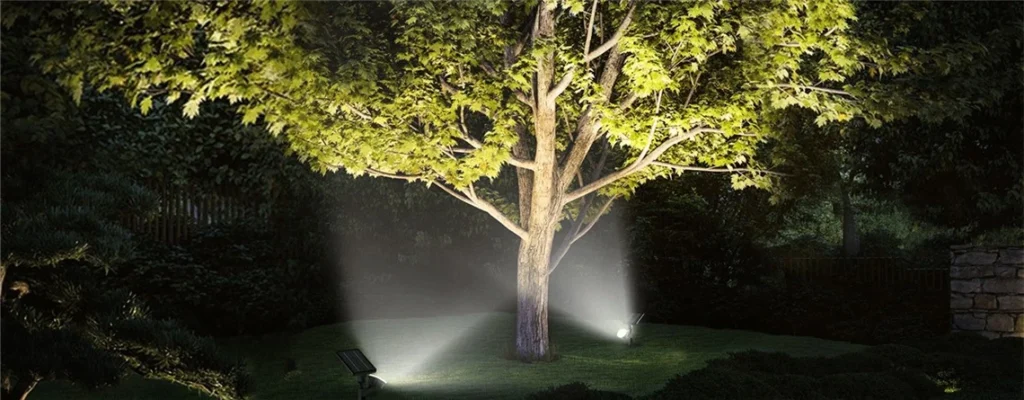
Understanding Solar Spotlight Brightness and Coverage
The brightness of solar spotlights, measured in lumens, determines how well they light up your space. Most models range from 100 to 1000 lumens, and the right choice depends on what you’re illuminating:
- 100–300 Lumens: Great for accent lighting, like highlighting a door’s architectural details or a small garage feature. Covers about 2–4 meters in diameter.
- 300–600 Lumens: Ideal for functional lighting, such as illuminating a pathway to your door or a single-car garage. Covers 5–8 meters.
- 600–1000 Lumens: Best for larger areas, like a double garage or wide entryway. Can cover 10 meters or more, creating a bold, well-lit effect.
Higher lumens mean brighter light, but don’t just chase numbers. Consider the beam angle—narrow beams focus light tightly, while wider beams spread it out. For entryways, a 30–60-degree beam works well; for garages, 60–120 degrees covers more ground.
Battery Life and Nighttime Performance
Solar spotlights rely on batteries charged by sunlight, so battery capacity is key to how long they shine at night. Most models come with batteries between 1800–3000 mAh. Here’s what that means:
- 1800–2200 mAh: Powers a 300-lumen light for 6–8 hours on a full charge, enough for most evenings if you get decent sunlight during the day.
- 2200–3000 mAh: Supports 600–1000-lumen lights for 8–10 hours, ideal for longer nights or high-brightness settings.
- Pro Tip: In cloudy climates, look for spotlights with larger batteries or a backup charging option to ensure consistent performance.
Placement matters too. Install the solar panel where it gets at least 6 hours of direct sunlight to max out the battery. If your area gets less sun, expect shorter runtimes unless you pick a model with a high-capacity battery.
Motion Sensors: Boosting Efficiency
Many solar spotlights come with motion sensors, which can stretch battery life and add convenience. Here’s why they’re worth considering:
- Energy Savings: Motion-activated lights only turn on when needed, saving power for longer nights or cloudy days.
- Security Boost: A sudden burst of light can deter unwanted visitors, making your entryway or garage feel safer.
- Customization: Most models let you adjust sensitivity and duration (e.g., 10–60 seconds per trigger). Set it to catch movement within 5–10 meters for best results.
Not every spot needs a sensor, though. If your light is for ambiance or constant illumination, a standard “on-at-dusk” mode might be enough. Just know that non-sensor models burn through the battery faster, so balance your needs with battery size.
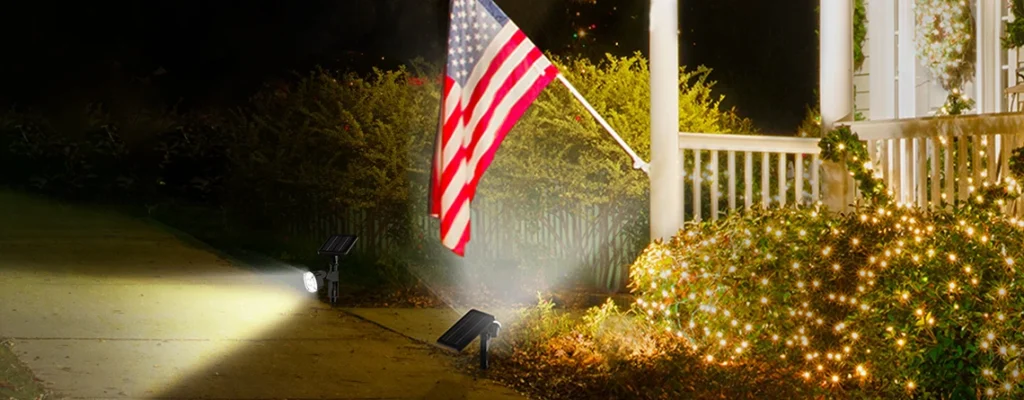
Solar vs. Traditional Spotlights: Energy and Maintenance
How do solar spotlights stack up against traditional wired ones? Let’s break it down:
- Energy Costs: Solar spotlights run on sunlight, so they cost nothing to operate once installed. Wired spotlights, even LED ones, add to your electricity bill—think $10–$30 a year for a single 20W light running 6 hours nightly.
- Installation: Solar lights are a breeze to set up—no wiring, no electrician. Just mount the light and panel, and you’re done. Wired lights often need professional installation, which can cost $100 or more.
- Maintenance: Solar spotlights need occasional panel cleaning to keep charging efficiently. Batteries may need replacing every 2–3 years. Wired lights have lower maintenance but rely on your home’s electrical system, which can fail in outages.
- Longevity: Both can last 5–10 years, but solar models are more exposed to weather, so check for IP65 or higher waterproof ratings.
Solar spotlights win for cost and ease, but wired ones might edge out for consistent brightness in areas with poor sunlight. For most homes, solar is plenty for entryways and garages.
Practical Tips for Choosing and Using Solar Spotlights
To make sure your solar spotlights deliver, keep these pointers in mind:
- Match Lumens to Purpose: Pick 300–600 lumens for general entryway lighting, 600+ for larger garages. Test the brightness at night before finalizing placement.
- Angle for Impact: Tilt the spotlight to focus on key features, like your door’s handle or garage numbers. Avoid pointing directly at eye level to prevent glare.
- Check the Panel: Ensure the solar panel isn’t shaded by trees or buildings. A separate panel (connected by a cable) gives you more placement flexibility.
- Test Motion Sensors: If using a sensor, walk around at night to fine-tune the range and timing. You don’t want it triggering every time a cat strolls by.
Spending a little time tweaking these details can make your solar spotlights both functional and eye-catching.
Wrapping It Up: Making Solar Spotlights Work for You
Solar spotlights are a smart, sustainable way to light up your entryway or garage, offering flexibility and zero energy costs. The key is picking the right brightness—300–600 lumens for most homes, higher for bigger spaces—and ensuring the battery can handle your needs. Motion sensors can add efficiency and security, but they’re not a must for every setup. Compared to wired lights, solar spotlights are easier to install and cheaper to run, though they require a bit more care in placement and maintenance. With the right model and a little testing, your front door or garage can look sharp and stay safe all night long.


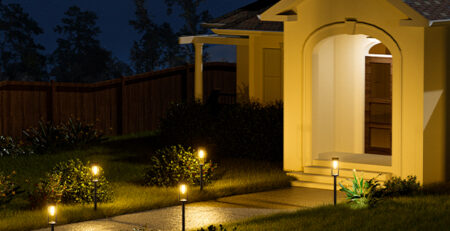
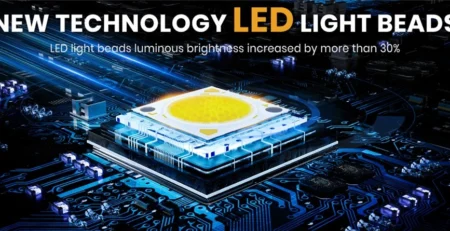
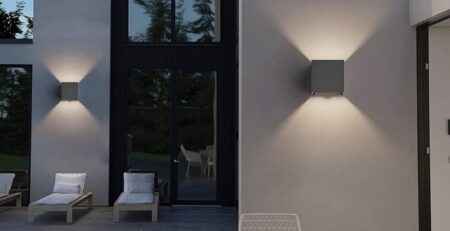

-1-1-450x231.webp)
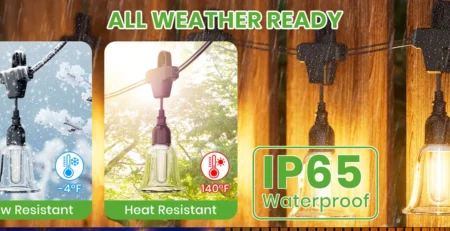
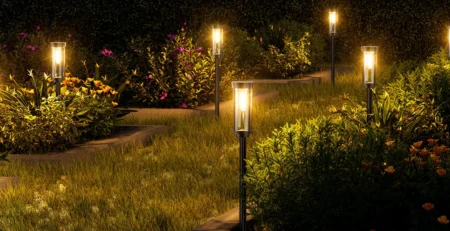

-4-1-450x231.webp)
Leave a Reply